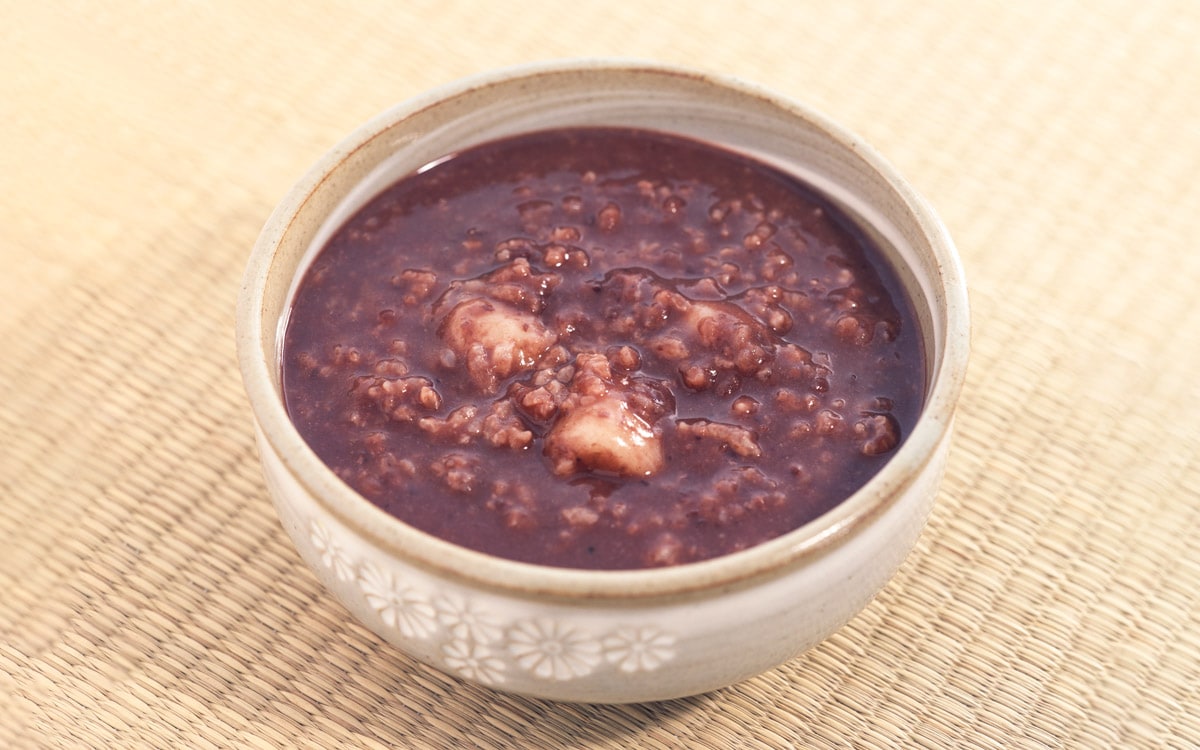
Dongji is a celebration of the Winter Solstice which occurs each year around December 22. This day has the longest night of the year with the shortest amount of daylight. In Korea, this day is the peak of winter, or midwinter. From this day on, daylight hours begin to increase while hours of darkness decrease. Dongji celebrates the symbolic rebirth of the sun and signals the return of spring. Although an unofficial holiday, events and celebrations related to Dongji do take place.
In the past, farmers used Dongji as a way to predict the upcoming agricultural season. If the weather was cold or snowy on Dongji, the upcoming harvest would be bountiful with high yields. On the other hand, if the weather was warm, the upcoming year would bring bad luck, adversity, and disease to crops.
On Dongji, many families come together to enjoy patjuk (red bean porridge). This soup is made using adzuki red beans and rice flour dumplings known as saealshim . Eating patjuk symbolizes the beginning of the new year and those who eat it grow older by a year. This is why Koreans call this day “Little Lunar New Year”.
Red beans also play an important symbolic role. In the past, people believed that ghosts disliked the color red. Eating the red bean porridge was a symbol of positive energy and believed to keep evil spirits away. Today, it is not uncommon for Koreans to sprinkle red beans around their home to keep negative energy away. If you are looking to try a bowl of patjuk for yourself, you can try it at Namsangol Hanok Village.
Another popular custom on Dongji is to give calendars as gifts to others as a sign of the new year. This tradition dates back to the Joseon dynasty. For Donji, kings would distribute calendars to their government officials. Today, this tradition between friends and families continues. Quilted socks are another gift often exchanged for Dongji as a sign of good luck.
Last Updated on Dec 17, 2021